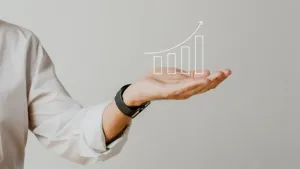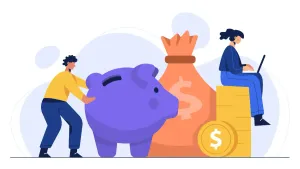There is one single financial concept that nearly every successful investor credits for their wealth: compound interest.
It is often called the "Eighth Wonder of the World" because it turns small, regular savings into huge sums of money over time. As a new investor, understanding compound interest is your single biggest advantage.
In simple terms, compound interest is earning interest on your interest.
If you have $100 and earn $10 of interest, the next year, you don't just earn interest on your original $100—you earn it on your new total of $110. Your money starts snowballing, and the longer the time you give it, the faster it grows.
Simple Interest vs. Compound Interest
To truly appreciate the power of compounding, you have to see what it's competing against: simple interest.
Simple Interest: The Straight Line
Imagine you lend a friend $1,000, and they promise to pay you 5% interest every year for ten years.
- Year 1: You earn $50 (5% of $1,000). Your total is $1,050.
- Year 2: You earn another $50 (5% of $1,000). Your total is $1,100.
- Year 10: You earn $50 again. Your total is $1,500.
With simple interest, you only earn interest on the original principal amount ($1,000). Your earnings grow in a slow, predictable straight line.
Compound Interest: The Snowball
Now, imagine you invest that same $1,000 in a retirement account earning an average of 5% interest every year.
- Year 1: You earn $50. Your new principal is $1,050.
- Year 2: You earn 5% of $1,050, which is $52.50. Your total is $1,102.50.
- Year 10: Your $1,000 has grown to $1,628.89.
You earned $128.89 more just by letting your interest earn interest. Your money grows faster and faster, following a powerful curve. This is the snowball effect.
The Three Ingredients of Compounding
Compound interest relies on three essential ingredients working together. When you use the calculator below, you are manipulating these three factors.
1. Principal (The Starter)
This is the money you start with and the money you add regularly. It is the core of the snowball.
- Action: The more you start with, the bigger the snowball is when it begins rolling. Even small, consistent contributions over a long time have a huge impact.
2. Interest Rate (The Slope)
This is the percentage return your investment earns each year. It is the slope of the hill.
- Action: Getting a higher rate (a steeper hill) dramatically increases your final total. A 9% return is far more powerful than a 6% return because the extra 3% compounds year after year.
3. Time (The Distance)
This is the most crucial ingredient. It is the length of the hill.
- Action: Time is the multiplier. The benefits of compounding are modest in the first few years, but the snowball truly explodes in the final 10 to 15 years. This is why starting early is the single best decision a young investor can make.
The Calculator and the Cost of Waiting
The most devastating lesson compound interest teaches is the Cost of Waiting. Every year you delay starting is a year you miss out on peak snowball growth.
Let's look at the famous parable of the early bird and the late bird, both aiming to retire at age 65, and assume both earn a 7% return.
- Investor A (Early Bird): Invests $5,000 per year from age 20 to 30 (10 total years of contributions). Then stops contributing entirely.
- Investor B (Late Bird): Waits until age 30. Invests $5,000 per year from age 30 to 65 (35 total years of contributions).
| Investor | Total Contribution | Final Balance at Age 65 |
| Early Bird (A) | $50,000 | $729,584 |
| Late Bird (B) | $175,000 | $700,432 |
The Shocking Result: The investor who contributed $125,000 less ended up with more money, simply because they gave their money a full decade more of compounding time.
Try the Compound Interest Calculator
Compound Interest Calculator
Your Final Total Will Be:
$...
Use this simple tool to see the power of your own timeline.
Starting Amount: [ $ ]
Monthly Contribution: [ $ ]
Annual Interest Rate (%): [ % ]
Years to Grow: [ ]
(Calculate)
Your Final Total will be: [ $_____ ]
Why Compounding Makes You Unstoppable
Beyond the numbers, compound interest affects your behavior in positive ways:
- It Tames Volatility: The market will have massive ups and downs. But if you are compounding, every drop in the market is just an opportunity to buy more shares that will compound for you later.
- It Rewards Patience: Compounding is a massive advantage for the calm, long-term investor. It rewards the discipline of consistency (Dollar-Cost Averaging) and the patience of the "set-it-and-forget-it" strategy.
- It Makes Saving Easier: When you see the interest you earned in Year 1 adding to your total principal for Year 2, it motivates you to save more. You are not just saving your money; you are giving your money's money a head start.
Compound interest is truly an engine of wealth. Your only job is to start it as soon as possible and give it the fuel (contributions) and time it needs to run.






